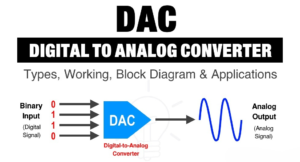As a Digital Creator, I understand the paramount importance of digital signatures in today’s digital landscape. These signatures are indispensable for ensuring the security and legality of electronic transactions. Acting as a distinctive identifier, a digital signature plays a pivotal role in verifying the authenticity and integrity of digital documents. In this article, I will guide you through the step-by-step process of crafting a digital signature, guaranteeing that your electronic communications and documents uphold the highest standards of security and trustworthiness.
- Understand the Basics of Digital Signatures:
Before diving into the creation process, it’s important to understand the fundamentals of digital signatures. A digital signature is created using a cryptographic algorithm that combines your private key with the content of the document you are signing. This creates a unique digital fingerprint that can be used to verify the integrity and origin of the document. - Choose a Digital Signature Service or Software:
To create a digital signature, you need to select a reliable digital signature service or software. There are various options available, both free and paid, that offer different features and levels of security. Some popular digital signature platforms include Adobe Sign, DocuSign, and HelloSign. Alternatively, you can also use cryptographic software like GPG (GNU Privacy Guard) to create your digital signature. - Generate a Digital Certificate:
To create a digital signature, you will need a digital certificate issued by a trusted certificate authority (CA). A digital certificate acts as proof of your identity and is used to verify the authenticity of your digital signature. You can obtain a digital certificate from a CA by following their specific process, which usually involves providing personal identification documents and completing a verification process. - Install and Configure the Digital Signature Software:
Once you have obtained your digital certificate, you will need to install and configure the digital signature software or service of your choice. Follow the instructions provided by the software provider to set up the necessary settings and preferences. This may involve importing your digital certificate into the software and configuring the encryption algorithms. - Sign a Document:
With the software or service set up, you can now proceed to sign a document digitally. Open the document that you want to sign using the digital signature software. Look for the option to add a digital signature, which is usually located in the toolbar or menu of the software. Select the digital signature option and follow the prompts to apply your digital signature to the document. - Verify the Digital Signature:
After signing the document with your digital signature, it’s crucial to verify its authenticity and integrity. Most digital signature software provides a verification feature that allows you to confirm the validity of a digital signature. To verify the digital signature, open the signed document in the same software or service and locate the verification option. Follow the prompts to verify the signature, ensuring that the document has not been tampered with since it was signed.
Frequently Asked Questions (FAQ) About Digital Signatures
What is a digital signature?
A digital signature is a cryptographic technique used to verify the authenticity and integrity of digital documents, messages, or transactions. It serves as an electronic equivalent of a handwritten signature in the digital realm.
How does a digital signature work?
Digital signatures utilize public-key cryptography, where each signer has a pair of keys: a private key and a public key. The private key is used to create the signature, while the public key is used to verify it. When a document is signed digitally, the signature is generated based on the document’s content and the signer’s private key. Recipients can verify the signature using the signer’s public key, ensuring that the document has not been altered and was indeed signed by the purported signer.
Are digital signatures legally binding?
Yes, in many jurisdictions, digital signatures are legally binding and hold the same legal status as handwritten signatures. Various laws and regulations, such as the Electronic Signatures in Global and National Commerce (ESIGN) Act in the United States and the eIDAS Regulation in the European Union, recognize the validity of digital signatures for electronic transactions.
Are digital signatures secure?
When implemented correctly, digital signatures offer a high level of security. The use of cryptographic algorithms ensures that signatures cannot be forged or altered without detection. However, it is essential to safeguard private keys and follow best practices for key management to prevent unauthorized access or misuse.
Can anyone create a digital signature?
Yes, anyone can create a digital signature provided they have access to digital signature software or services. However, it’s crucial to understand the responsibilities and implications of using digital signatures, especially in contexts where legal validity is required.
Conclusion:
Creating a digital signature is a straightforward process that involves obtaining a digital certificate, choosing reliable software or services, and signing the document electronically. By following the steps outlined in this article, you can ensure the authenticity and integrity of your digital documents, providing a secure and trusted method for electronic transactions. Remember to always use reputable software or services and keep your digital certificate secure to maintain the integrity of your digital signatures.











Be First to Comment